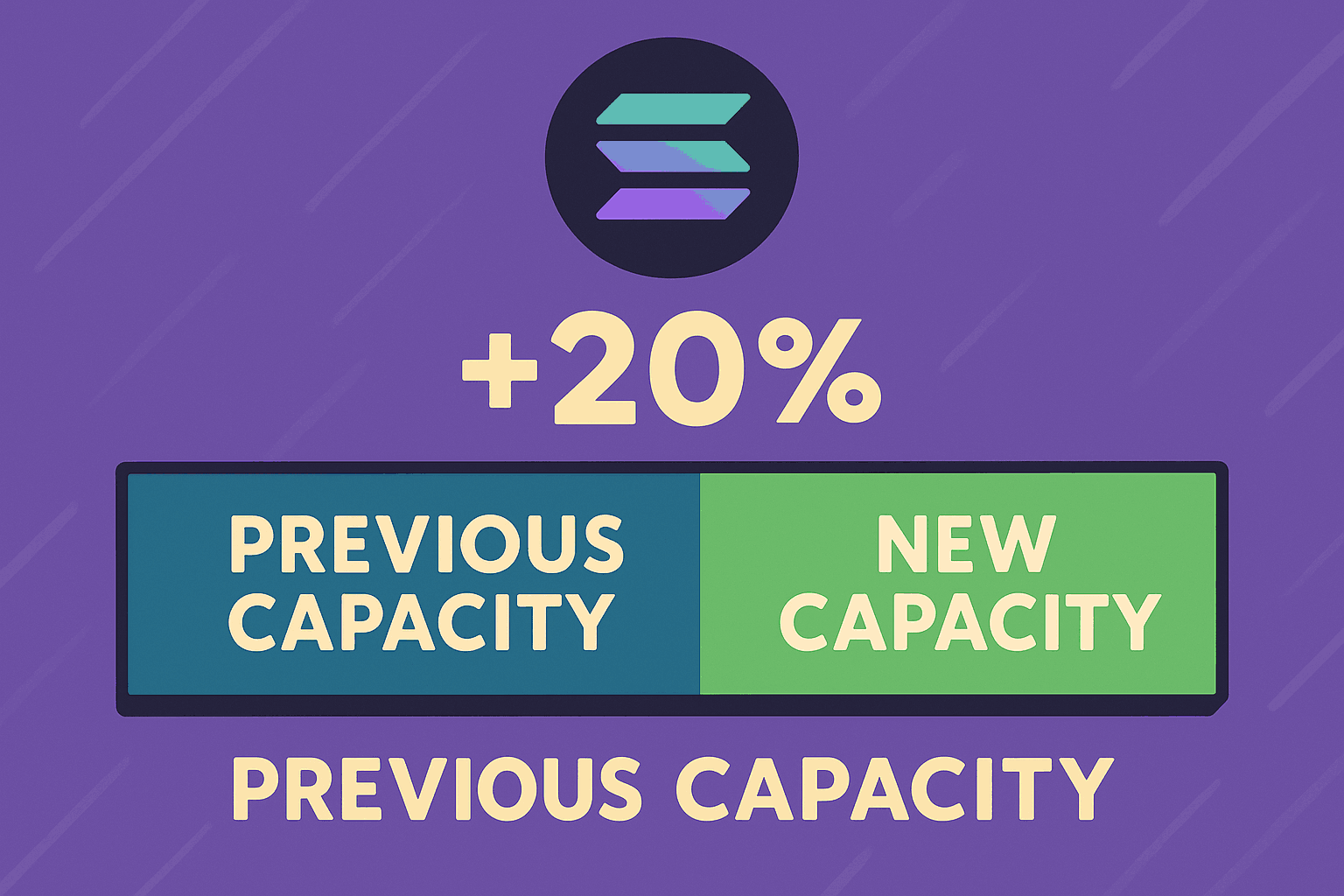
Solana Increases Block Capacity to 60 Million Units to Alleviate Network Congestion
Solana has ramped up its block capacity by 20%, increasing the limit from 50 million to 60 million compute units per block. This upgrade, executed under the proposal SIMD-0256, became active on July 23. It is designed to enhance the network’s ability to manage transaction surges during peak periods, aiming to minimize congestion and associated costs.
Understanding Compute Units
Compute units are essential for measuring the workload that transactions impose. Simpler operations like token transfers use minimal compute units, while intricate processes, such as multi-swaps or advanced DeFi options, consume more.
Quote
The SIMD-0256 proposal to increase Solana’s block limit to 60M CU has been activated on the mainnet. The block space may increase to 100M CU by the end of this year. Compute Unit (CU) is similar to Ethereum’s Gas. — Wu Blockchain
Performance Improvements During High Demand
According to Mert Mumtaz, the increase is expected to lower transaction fees during steady activity and enhance overall consistency. This change comes as a response to moments of high demand, particularly when major NFT launches or airdrops occur.
Challenges for Validators
While the enhanced capacity is beneficial for users, it also poses challenges to the operating machines on the network. Increased block size requires more robust hardware, raising discussions among developers about accommodating future limits.
Reflections on Past Upgrades
This is Solana’s second significant capacity adjustment this year, following a prior increase from 48 million to 50 million units. Each change is motivated by previous experiences with congestion, particularly during fluctuations caused by meme coin trading.
Outlook on Future Developments
Amidst ongoing discussions, SIMD-0286 proposes an increase to 100 million compute units, potentially setting the stage for heightened use. However, this suggestion remains under contemplation.
Price Stability
Despite the strategic network upgrade, Solana’s token, SOL, experienced little price fluctuation, maintaining a stable trading rate amid recent changes. History suggests that such infrastructure updates typically do not induce significant short-term market impacts.
Conclusion
Solana’s initiative to elevate its compute limit portrays its commitment to handling heightened traffic without sacrificing efficiency. As it progresses towards 60 million compute units, the broader implications for the network are carefully considered.



